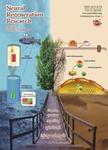MicroRNAs: a novel promising therapeutic target for cerebral ischemia/reperfusion injury?
MicroRNAs: a novel promising therapeutic target for cerebral ischemia/reperfusion injury?作者机构:Institute of Neuroscience Kunming Medical University Faculty of Clinical Medicine Yunnan University of Traditional Chinese Medicine the First Affiliated Hospital of Yunnan University of Traditional Chinese Medicine School of Economics of Sichuan University Department of Neurosurgery the Second Affiliated Hospital of Kunming Medical University
出 版 物:《Neural Regeneration Research》 (中国神经再生研究(英文版))
年 卷 期:2015年第10卷第11期
页 面:1799-1808页
核心收录:
学科分类:0710[理学-生物学] 1002[医学-临床医学] 1001[医学-基础医学(可授医学、理学学位)] 100204[医学-神经病学] 10[医学]
基 金:supported by grants from the National Natural Science Foundation of China No.81271358 Yunnan Science Foundation of China No.2013FZ199
主 题:nerve regeneration microRNA therapeutic target cerebral ischemia/reperfusion injury miRNA expression profiles bioinformatics analysis Gene Ontology analysis molecular mechanism KEGG pathway neural regeneration
摘 要:To determine the molecular mechanism of cerebral ischemia/reperfusion injury, we examined the micro RNA(mi RNA) expression profile in rat cortex after focal cerebral ischemia/reperfusion injury using mi RNA microarrays and bioinformatic tools to systematically analyze Gene Ontology(GO) function classifications, as well as the signaling pathways of genes targeted by these differentially expressed mi RNAs. Our results show significantly changed mi RNA expression profiles in the reperfusion period after focal cerebral ischemia, with a total of 15 mi RNAs up-regulated and 44 mi RNAs down-regulated. Target genes of these differentially expressed mi RNAs were mainly involved in metabolic and cellular processes, which were identified as hub nodes of a mi RNA-GO-network. The most correlated pathways included D-glutamine and D-glutamate metabolism, the renin-angiotensin system, peroxisomes, the PPAR signaling pathway, SNARE interactions in vesicular transport, and the calcium signaling pathway. Our study suggests that mi RNAs play an important role in the pathological process of cerebral ischemia/reperfusion injury. Understanding mi RNA expression and function may shed light on the molecular mechanism of cerebral ischemia/reperfusion injury.



